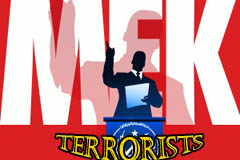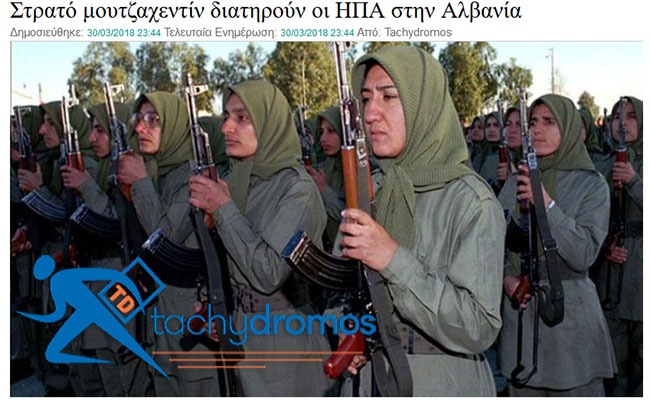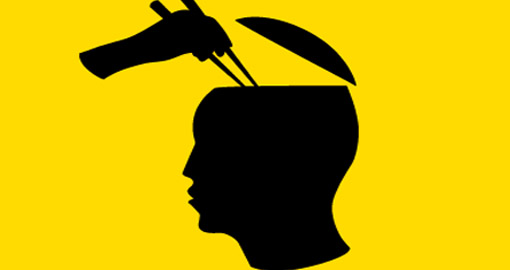Iran’s Islamic Revolution remains as bellwether, even though attempts to emulate it have not yet succeeded.
— Journalist Eric Walberg
In number theory, 41 is a prime number meaning it is not divisible by any number except itself and one. Similarly, the Islamic Revolution in Iran so far has been unique in its success and indivisible unity of purpose, despite numerous attempts at sabotage by external and internal actors. At this prime age of 41, Iran is fully capable of charting an assertive leadership path to recapture the spirit and reaffirm the original goals of the Islamic Revolution of 1979, among which is the propagation of Islam to bring about social change for the welfare of all humanity.2
It is no minor accomplishment for the Islamic Republic of Iran to have maintained an independent geopolitical course for a period of forty one years in spite of the overwhelming diplomatic, economic and military pressure employed by the United States to force Tehran to cave in to the diktats of the Washington regime. Even before the erstwhile shah, Mohammed Reza Pahlavi, had fled the country on January 17, 1979, U.S. air force general Robert E. “Dutch” Huyser had arrived on January 3 on a mission to test the waters for a rerun of the August 1953 coup, which had originally placed the U.S.-backed dictator in power in the first place.3

With the victory of the Islamic Revolution on February 11, 1979, Ayatollah Khomeini (r) went on to found an Islamic Republic, whose constitution (Article 154) explicitly states that Iran “is concerned with the welfare of humanity as a whole and takes independence, liberty and sovereignty of justice and righteousness as the right of people in the world over.” Imam Khomeini was very clear in his view that “Islam is revealed for mankind,” and, therefore, the revolution must be exported.3 This concept, which raised fears of popular uprisings toppling the U.S.-abetted tyrants in the region and beyond, put the nascent Islamic Republic on a collision course with the Washington regime. Among the despotic leaders shaken by Iran’s Islamic Revolution was the U.S.-supported Iraqi dictator, Saddam, who denounced Imam Khomeini and called upon Iranian Arabs to revolt.4
If external threats to the newly established Islamic Republic weren’t enough, others arose internally. Massoumeh Ebtekar, who witnessed the revolution firsthand and is currently Vice President of Iran for Women and Family Affairs, recalled that “we were sure that foreign elements were actively involved in attempts to weaken and undermine the young republic.” To avert the suspected foreign plot to overthrow the Iranian government, a group of students, including now Vice President Ebtekar, decided to act, and on November 4, 1979 occupied the U.S. embassy in Tehran and detained the staff.5 U.S. president Jimmy Carter responded ten days later by freezing US $12 billion’s worth of Iran’s assets in the U.S., and later banned all trade with and travel to Iran.6 Also affected were Iranian assets in U.S. banks in Britain, much of which were in Bank of America’s London branch.7 The following year on April 7, the U.S. cut diplomatic relations with Iran, and has never reinstated them.8 If Carter had not allowed the deposed shah entry to the U.S., the embassy takeover most likely would not have occurred.9

Another internal threat, the Mujahedin-e Khalq (MeK), was openly unhappy over the constitution, which, according to them, did not address their demands. After a humiliating defeat in the March and May 1980 parliamentary elections (no MeK candidates were elected),10 the MeK became increasingly belligerent over their lack of position in the new government, directing their frustration ever more violently towards members of the Islamic Republic Party (IRP), which had won a decisive victory in the elections.
Despite the electoral defeat, the MeK openly backed Iran’s first president, Abolhassan Bani Sadr, however, following his removal from office for incompetency in June 1981, the MeK declared an armed struggle against the standing government. On June 28, 1981 and again on August 30, the MeK carried out terror bombing attacks against the IRP and government leaders. In 1986, the MeK moved its operations to Iraq and aligned itself with Saddam, who backed the terrorist group until being ousted by the U.S. invasion in 2003. To date, the Washington regime views the MeK as a viable means by which to overthrow the legitimate government of Iran.11
Following the student takeover of the U.S. embassy, which was later shown to be a nerve center for CIA espionage in the region,12 U.S. president Carter ordered a desperate mission on April 24, 1980 to invade Iran and free the hostages despite negotiations for their release still being in progress.13 The so-called hostage crisis and the U.S. president’s failed interventionist response provided a perpetual pretext for Washington’s vehemently vindictive view against reestablishing any level of diplomatic relations with the Islamic Republic of Iran. The 444-day crisis, according to sworn testimony by Israeli intelligence agent Ari Ben-Menashe, was a joint effort by the CIA and Mossad to delay the release of the 52 hostages and thereby ensure an electoral victory for Ronald Reagan in the 1980 U.S. presidential race.14
In the midst of the post-revolutionary struggle to establish a fully functioning Islamic government, Iraqi dictator Saddam, with U.S. blessing, attacked the fledgling Islamic Republic on September 22, 1980, imposing a costly 8-year-long war that consumed some 60 to 70 percent of Iran’s national budget, not to mention the suffering of the Iranian people and their sacrifices in defense of Iran and Islam.15 The economic impact of the war on Iran itself was enormous with estimated direct costs in the range of US $600 billion and total cost of US $1 trillion.16 In the course of this U.S.-supported war, chemical agents were used extensively for the first time since the First World War, resulting in the deaths of some 4,700 Iranians in a single attack. The U.S. also provided Saddam with biological agents such as anthrax and E. coli.17
Howard Teicher, director of political-military affairs for the U.S. National Security Council from 1982 to 1987, in an affidavit stated, “CIA Director [William] Casey personally spearheaded the effort to ensure that Iraq had sufficient military weapons, ammunition and vehicles to avoid losing the Iran-Iraq war.” Teicher also testified that U.S. president Reagan had sent a secret message to Saddam advising him that “Iraq should step up its air war and bombing of Iran.” Teicher’s sworn testimony provides strong evidence that the U.S. intent was for Saddam to bomb Iranian cities, thereby unavoidably targeting civilians.18

Saddam followed Reagan’s advice to the letter by launching eleven SCUD B missiles at Tehran on February 29, 1988. Over the next two weeks, more than 100 of Saddam’s missiles rained down upon the cities of Tehran, Qom and Isfahan along with bombing raids conducted against a total of 37 Iranian cities. Earlier in October 1987 and again in April 1988, the U.S. as part of its overt but undeclared war against the Islamic Republic, attacked Iranian ships and oil platforms under expanded rules of engagement.19 As a result of Washington’s designation of the Persian Gulf as essentially a free-fire zone for Iranian targets, the commander of the USS Vincennes, William C. Rogers, fired two missiles (after twenty-three failed attempts)20 at what he claimed was a military target but in fact was Iran Air Flight 655 carrying 290 civilian passengers from Bandar Abbas to Dubai. For downing the civilian airliner and killing all on board, Rogers was awarded the Legion of Merit “for exceptionally meritorious service” for this appalling atrocity.21
Yet in spite of the near universal support given by the U.S. and its western minions to Saddam, the people of Iran rose up to defend their newly liberated land in what were termed “human wave attacks” in the western press. Giving their lives selflessly in the cause of defending Islam and Iran, these martyrs, whose numbers reached to half a million,22 struck fear in the black heart of Saddam and presented a conundrum to the materialistic west. Ayatollah Mohammad-Taqi Rahbar explains that martyrdom, while clearly understood in the Islamic world, “is incomprehensible and even pointless in materialist and atheistic cultures.”23
The incomprehensibility to most westerners of the spiritual basis of Iran’s Islamic Revolution leads to some interesting “anti-explanations.” Professor of Sociology at the University of North Carolina Charles Kurzman wrote, “After the Iranian Revolution, those who had considered the upheaval unthinkable became preoccupied with understanding how they could have been so mistaken.” After pointing out the shortcomings of the various political, economic, cultural and other explanations, Kurzman notes, “The more I learned about the Iranian Revolution, the more theoretical anomalies I discovered.” Yet this author acknowledges that 55 percent of educated, middle-class Iranians and 71 percent of others he interviewed spoke of Islam as being involved in their decision to participate in the revolution.24
Apparently, for secular-leaning western scholars, Islam cannot be accepted as the basis for an explanation of a successful revolution. For example, even Iranian expatriate scholar Ervand Abrahamian blames the Islamic Revolution on “overwhelming pressures” in Iranian society due to the shah, who “was sitting on such a volcano, having alienated almost every sector of society.”25 Downplaying the role of Islam in Iran’s revolution, Iranian expatriate scholar Asef Bayat insists that there was a “strong secular tendency,” which peaked in the 1970s. Bayat incredulously claims, “In Iran, an Islamic movement was in the making when it was interrupted by the Islamic revolution.”26 Other scholars date the origin of the Islamic movement in Iran to the tobacco crisis of 1890-1891, while Farhang Rejaee, a professor at the Carleton Centre for the Study of Islam in Ottawa, Canada, points to the assassination of Nasr al-Din Shah in 1896.27
The current Islamic movement in Iran had begun on the 15th of Khordad, 1342 (June 5, 1963), predating the Islamic Revolution by some 15 years. In a June 1979 speech marking the anniversary of the 15th of Khordad uprising, Imam Khomeini specifically referred to the Islamic movement and its creation in the mosque network. “Who are they that wish to divert our Islamic movement from Islam?” asked the Imam. “It was the mosques that created this revolution,” he emphasized, adding. “It was the mosques that brought this [Islamic] movement into being.”28 Likewise refuting the theories of the western and westernized scholars, Ayatollah Mohammad-Taqi Rahbar explains, “The secret of success of the Islamic Revolution of Iran also is naught but this: valuing the high ideals of Islam and of the Islamic humanities.” As to the failure of other revolutions, he blames “want of a sufficient depth in its spiritual dimension.” Finally, he affirms, “The revolutionary experience of Iran should indeed become a model for others to emulate.”29

By basing economics and social change on the solid foundation of Islam, Iran has achieved greater progress in many areas, such as reducing poverty, improving health care, eliminating illiteracy, increasing access to education and expanding opportunities for women, than had been the case during the shah’s regime. As a result, despite the unending U.S. hostility against Iran through ruthless imposed wars, covert and overt aggressions, punitive economic sanctions and continuous diplomatic isolation, the Islamic Republic has managed to amass an impressive list of accomplishments. U.S. economic sanctions have had the effect of causing Iran to seek self-sufficiency in a number of areas, including weaponry and other military hardware, food production, steel, paper and paper products, cement, heavy industrial machinery, pharmaceuticals and telecommunications equipment. In particular, the domestic production of armaments has helped to ensure the country’s independence and security, as has the highly developed military strategy of the “fast boat swarm” for naval defense in the Persian Gulf.30
Moreover, in the field of health care, Iran has made laudable strides, increasing life expectancy from 56 years in the 1970s to over 70, and reducing the infant mortality rate from 104 per 1,000 births to 25.31 The Islamic Republic has created, and continuously expanded, a system of hospitals and health clinics, concentrating on areas impacted by economic hardship. The results have been sufficiently impressive for some universities and NGOs in the U.S. state of Mississippi to introduce Iranian-style health care into the impoverished areas of the Mississippi Delta region.32 Rural areas also benefitted from the revolution in other ways besides access to health care. By 2002, rural literacy had risen to 70 percent, each village had an average of two college graduates, and 99 percent of rural households had electricity. In 1976 only ten percent of the rural work force was employed in the industrial, construction and service sectors, whereas 51 percent was employed therein by 1996.33 Land was redistributed among peasants, who formed numerous cooperatives, which assisted in raising prices for agricultural products. Even the poorest of Iranians were able to have at least some level of access to modern consumer goods.31
“The biggest advances in the educational, professional and social standing of women in Iran’s history have come since the revolution,” wrote scholars Hillary Mann and Flynt Leverett.34 After the victory of the Islamic Revolution, female literacy rates skyrocketed from 36 percent in 1976 to 74 percent in 1996, with urban women toping 82 percent.33 Women were provided with the same educational opportunities as men, and were employed in both the public and private sectors. Not only were women allowed to drive (unlike other “Islamic” countries), but also participated in political, commercial and civil activities, as well as in the security sector. Health care in the Islamic Republic included women’s clinics, where progressive family planning and other services were available.35
“This united gathering which took place in Iran, and this great change which happened, must be taken as an example to be followed and never forgotten,” said Imam Khomeini (r) on 7th of Esfand 1359 (26 February 1981).36 Despite that to date, no other Muslim-majority nation has yet to emulate successfully the revolutionary path taken by the valiant people of Iran, the paradigm remains as does the potential for Iran’s leadership to bring about a united Islamic Ummah.
Eric Walberg, Islamic Resistance to Imperialism (Atlanta: Clarity Press, 2015), 277. [↩]
Farhang Rajaee, “Iranian Ideology and Worldview: The Cultural Export of Revolution,” in The Iranian Revolution: Its Global Impact, ed. John L. Esposito (Miami: Florida International University Press, 1990), 66-67. [↩]
Amin Saikal, Iran Rising: The Survival and Future of the Islamic Republic (Princeton: Princeton University Press, 2019), 59-61. [↩] [↩]
John Esposito, “The Iranian Revolution: A Ten-Year Perspective,” in The Iranian Revolution: Its Global Impact, ed. John L. Esposito (Miami: Florida International University Press, 1990), 31, 33. [↩]
Michael Axworthy, Revolutionary Iran: A History of the Islamic Republic (Oxford: Oxford University Press, 2013), 166-168. [↩]
Seyed Hossein Mousavian, Iran and the United States (New York: Bloomsbury, 2014), 36, 65. [↩]
Michael Axworthy, ibid., 176. [↩]
Gary Sick, All Fall Down: America’s Tragic Encounter with Iran (New York: Random House, 1985), 288-289. [↩]
Dan Kovalik, The Plot to Attack Iran (New York: Skyhorse Publishing, 2018), 101. [↩]
Michael Axworthy, ibid., 181. [↩]
Seyed Hossein Mousavian, ibid., 78, 81-82. [↩]
Eric Walberg, ibid., 62. [↩]
Amin Saikal, ibid., 80. [↩]
Dan Kovalik, ibid., 80. [↩]
Amin Saikal, ibid., 82-84. [↩]
Tawfiq Alsaif, Islamic Democracy and its Limits: The Iranian Experience Since 1979 (London: Saqi, 2007), 74. [↩]
Dan Kovalik, ibid., 127. [↩]
Seyed Hossein Mousavian, ibid., 100. [↩]
Gary Sick, “Trial and Error: Reflections on the Iran-Iraq War,” in Iran’s Revolution: The Search for Consensus, ed. R.K. Ramazani (Bloomington: University of Indiana Press, 1990), 116-118. [↩]
Michael Axworthy, ibid., 276. [↩]
Seyed Hossein Mousavian, ibid., 101-102. [↩]
Michael Axworthy, ibid., 293. [↩]
Ayatollah Mohammad-Taqi Rahbar, Spiritual Dimensions of the Islamic Revolution of Iran, trans. Blake Archer Williams (Lion of Najaf Publishers, 2017), 84. [↩]
Charles Kurzman, The Unthinkable Revolution in Iran (Cambridge: Harvard University Press, 2005), 4-8, 184. [↩]
Ervand Abrahamian, A History of Modern Iran (Cambridge: Cambridge University Press, 2008), 155. [↩]
Asef Bayat, Making Islam Democratic (Stanford: Stanford University Press, 2007), 31-32. [↩]
Farhang Rejaee, Islam and Modernism: The Changing Discourse in Iran (Austin: University of Texas Press, 2007), 19-20. [↩]
Said Amir Arjomand, The Turban for the Crown: The Islamic Revolution in Iran (New York: Oxford University Press, 1988), 137. [↩]
Ayatollah Mohammad-Taqi Rahbar, ibid., 98. [↩]
Flynt Leverett and Hillary Mann Leverett, Going to Tehran (New York: Metropolitan Books, 2013), 42, 80, 188-189. [↩]
Eric Walberg, ibid., 237. [↩] [↩]
Flynt Leverett and Hillary Mann Leverett, ibid., 191. [↩]
Asef Bayat, ibid., 103. [↩] [↩]
Flynt Leverett and Hillary Mann Leverett, ibid., 193. [↩]
Amin Saikal, ibid., 89-90. [↩]
Imam Khomeini, Fundamentals of the Islamic Revolution, trans. M.J. Khalili and S. Manafi Anari (Tehran: Institute for the Compilation and Publication of Imam Khomeini’s Works, 2009), 168. [↩]
by Yuram Abdullah Weiler, Dissident Voice


